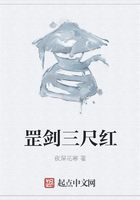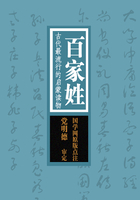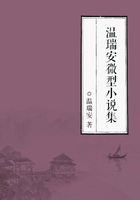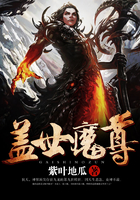Beyond Guilt, Fear & Despair
Welcome to our continuing exploration.
In 1977, the education-for-action organization we cofounded, Food First-flourishing today with new leadership-released a booklet in which we first took on the "myths of hunger." Two extensive book-length editions followed, and over the years both Food First and we personally have been deeply moved by the many people who've told us that this book changed the course of their lives. These responses, along with the startling realities of hunger in the twenty-first century, have spurred us to create the new book now in your hands.
Please join us on our journey of more than forty years, in which we've sought to understand why there is hunger in a world of plenty, and to discover the most powerful steps we each can take to end it, once and for all. For us, learning had to begin with unlearning. Cutting through the simplistic and scary clichés about hunger, we arrived at some surprising findings:
The world produces more than enough for everyone to eat well.
No country is a hopeless basket case. Even countries many people think of as utterly lacking actually have the resources necessary for people to free themselves from hunger.
Population growth is not the cause of hunger. Rather, hunger and continuing population growth share the same root causes.
Climate change does not mean hunger is inevitable.
Increasing a nation's food production may not reduce hunger. Food production per person can increase while more people are nutritionally deprived.
Our government's foreign aid often hurts rather than helps the hungry. But each of us can play a critical role in ending hunger.
Unlikely as it may seem, the interests of the vast majority of Americans have much in common with those of the world's hungry.
Our book explains these surprising findings and many more that have freed us from a response to hunger mired in guilt, fear, and hopelessness. But first we must ask the seemingly grade-school question, Just what is hunger? Many people assume they know-they've felt it, they've read about it, they've been touched by images of hungry people on television or the Internet. But the greatest obstacle to grasping the causes and solutions to world hunger is that few of us stop to ponder this elemental question.
WHAT IS HUNGER?
Television images haunt us. Stunted, bony bodies. Long lines waiting for a meager bowl of gruel. This is famine hunger in its acute form, the kind no one could miss.
But hunger comes in another form: the day-in-day-out hunger of hundreds of millions of people and nutritional deprivation affecting many more. While chronic hunger doesn't make the evening news, it takes more lives than famine. Every day this largely invisible hunger and its related preventable diseases kill as many as eight thousand children under the age of five. That's roughly three million children each year. Imagine: Every eight days the number of children lost worldwide equals the entire death toll of the Hiroshima bomb.[1]
Statistics like this are staggering. They shock and alarm. But numbers can also numb. They can distance us from what is actually very close to us. So we asked ourselves, What really is hunger?
Is it the gnawing pain in the stomach when we miss a meal? The physical depletion of those suffering chronic undernutrition? The listless stare of a hungry dying child in a televised appeal? Yes, but it is more. We became convinced that as long as we conceive of hunger only in physical measures, we will never truly understand it, or its roots.
What, we asked ourselves, would it mean to think of hunger in terms of universal human emotions, feelings that all of us have experienced at some time in our lives? We'll mention only four such emotions, to give you an idea of what we mean.
A friend of ours, Dr. Charles Clements, is a former Air Force pilot and Vietnam veteran who years ago spent time treating peasants in El Salvador. He wrote of a family he tried to help whose son and daughter had died of fever and diarrhea. "Both had been lost," he writes, "in the years when Camila and her husband had chosen to pay their mortgage, a sum equal to half the value of their crop, rather than keep the money to feed their children. Each year, the choice was always the same. If they paid, their children's lives were endangered. If they didn't, their land could be repossessed."
Being hungry thus means anguish. The anguish of impossible choices. But it is more….
In Nicaragua some years ago, we met Amanda Espinoza, a poor rural woman, who under the long dictatorship of the Somoza dynasty had never had enough to feed her family. She told us that she had endured six stillbirths and watched five of her children die before the age of one.
To Amanda, being hungry means watching people you love die. It is grief.
Throughout the world, the poor are made to blame themselves for their poverty. The day we walked into a home in the Philippine countryside, the first words we heard were an apology for the poverty of the dwelling. Being hungry also means living in humiliation.
Anguish, grief, and humiliation are a part of what hunger means. But increasingly throughout the world, hunger has a fourth dimension.
More recently in Brazil we spent time with a peasant organization known as the Landless Workers' Movement. Since the 1980s, its members have struggled to achieve fair access to farmland to feed their families, for in Brazil a tiny minority controls most of the agricultural land-much gained illegally-while using little of it. Sitting in a countryside meeting room, we were captivated by the enthusiasm of a Catholic nun explaining key details of the movement's upcoming national assembly. Suddenly, a young man on crutches, his foot bandaged, hobbled through the door. Everyone immediately burst into emotional cheers of support. What was this about? we wondered. At break we learned: The man had been seriously wounded in an attack by landowners on the camp where he and his family waited for legal land title. Later we were told that, since the movement's founding, fifteen hundred members have been killed by landowners and corrupt law enforcement officers who've felt threatened by the demand for fair access to land by poor landless people.[2]
Often, then, a fourth dimension of hunger is fear.
Anguish, grief, humiliation, and fear. What if we refused merely to count the hungry and instead tried also to understand hunger in terms of such universal emotions?
How we understand hunger determines what we think its solutions are. If we think of hunger only as numbers-numbers of people with too few calories-the solution also appears to us in numbers: numbers of tons of food aid, or numbers of dollars in economic assistance. But once we begin to understand hunger as real people coping with the most painful of human emotions, we can perceive its roots. We need only ask, When have we experienced any of these emotions ourselves? Hasn't it been when we have felt out of control of our lives-powerless to protect ourselves and those we love?
Hunger has thus become for us the ultimate symbol of powerlessness.
Appreciating that hunger tells us a person has been robbed of the most basic power-the power to protect ourselves and those we love-is a first step. Peeling back the layers of misunderstanding, we must then ask, If powerlessness lies at the very root of hunger, what are hunger's causes?
Certainly, the cause is not scarcity. The world is awash with food, as the chapter on Myth 1 will show. Neither can we blame hunger on natural disasters or climate change. Put most simply, the root cause of hunger isn't a scarcity of food; it's a [scarcity of democracy.]
Wait a minute! What does democracy have to do with hunger? Well, in our view-everything. Democracy carries within it the principle of accountability. Democratic forums and structures are those in which people have a say in decisions that most affect their well-being. Leadership is kept accountable to the needs of the broad public.
Thus, human dignity lies at democracy's core.
Antidemocratic structures, by contrast, are those in which power is so tightly concentrated that the majority of people are left with no say at all. Leaders are accountable only to the powerful minority.
In the United States, we think of democracy as a strictly political concept. We grow up absorbing the notion that political democracy enables us as citizens to protect certain rights-to vote, to have our civil liberties upheld, and to enjoy fair access to opportunities for safe, satisfying lives. We take pride in knowing that we've achieved voting rights and the rule of law-however imperfect-when many societies haven't.
But we hope that reading this book will stretch people's hearts and minds as writing it has stretched ours. We hope it will help us to conceive of democracy as more than a political structure-that we will come to see democracy as a set of values of inclusion, fairness, and mutual accountability applying to all arenas of life, including -economics, in all societies. And we hope that in so doing, we will realize the many ways each of us can contribute to the end of hunger.
ON POWER AND POWERLESSNESS
To begin to make these connections, let us look briefly at how the opposite of democracy-antidemocratic decision making-robs people of power over their lives on many levels. Here and throughout this book we focus on realities in much of the Global South.[3] However, similar dynamics show up in many industrial countries as well.
First, within the family. Women are responsible for growing much of the world's food-60 to 80 percent in the Global South.[4] The resources women have to grow staple foods largely determine their family's nutritional well-being. But many women are losing their special role in food production, as a result of continuing privatization of land ownership and a focus on cash crops, especially for export. Agricultural credit for producing cash crops goes overwhelmingly to men, allowing food crops to languish. This dynamic within the family, often reinforced by government policies, helps explain the crisis of "nutritional deprivation" defined in Myth 1.[5]
Second, at the village level. In most countries, a consistent pattern emerges: Fewer and fewer people control more and more farm-and pastureland. Increasing numbers of people have none at all.[6] Today, global "land grabs" are speeding this trend as foreign capital takes control of huge swaths of land in the Global South. "When people lose access to their land, they also lose their means to obtain food, their communities, and their cultures," writes Fred Magdoff.[7]
Third, at the national level. Wherever people have been made hungry, power is in the hands of those unaccountable to their people. Antidemocratic governments answering only to elites, including large landholders and monopolistic agricultural industries, lavish them with credit, subsidies, and other assistance. Often brutally, such governments fight any reform that would make control over food-producing resources more equitable.
These levels are not hard to see. But there is another, wider arena shaping all of our lives today, a fourth level on which democracy is scarce: the international arena of commerce and finance. A handful of corporations dominate world trade in the agricultural commodities that are the lifeblood of economies on which many of the world's poorest people depend. Historically, efforts by governments in the Global South to bargain for higher prices have repeatedly failed in the face of the preeminent power of the giant trading corporations and the trade policies of the industrial countries and international governing bodies they dominate. Myths 6 and 7 explore these realities.
In attempting to encapsulate the antidemocratic roots of hunger, we have traveled from the level of the family to that of international commerce and finance. Let us complete the circle by returning to the family.
As economic decisions are made by those unaccountable to their citizens, insecurity deepens for millions of people. Economic pressures tear family bonds asunder as men are forced to leave home in search of work. More and more women shoulder family responsibilities alone. Although most nations fail to report on this trend, woefully inadequate World Bank data suggest that worldwide as many as one-quarter of all households are now headed by women.[8] On top of the weight of poverty, they confront barriers of discrimination. The breakdown of the traditional family structure does not bring liberation for women; it often simply means greater hardship.
Given this pattern, it should come as no surprise that most of the hungry in the world are women and the children they care for. Most of those who die from hunger every year are children.[9]
In our effort to grasp the roots of hunger, we have identified the problem: the ever-greater scarcity not of food but of democracy-democracy understood to include power over the life-and-death question of access to food.
PROGRESS AGAINST HUNGER?
As we begin to probe the roots of and solutions to hunger, let's also take in the key messages we receive in the media about humanity's progress toward ending hunger.
Some are quite upbeat.
The number of hungry people in what the Food and Agriculture Organization of the United Nations (FAO) calls "developing countries" has dropped from almost a billion in 1990 to about 800 million in 2015, and the percentage of their people who are hungry has fallen fast, down 45 percent since 1990.[10]
The United Nations Millennium Development Goals set its hunger-reduction target at cutting in half the percentage of hungry people in developing countries by 2015, and now the UN is celebrating.
We didn't quite hit the target, we're told, but we came really close. Seventy-two countries have cut in half the proportion of hungry people since 1990. While the FAO's 2015 annual hunger report frames its message as "uneven progress," the UN News Center strikes a different note picked up by wider media: Overall, humanity is on the right track. If we continue what the FAO calls "inclusive growth" with "social protection," and we reduce civil conflict while dealing better with climate and other natural disasters, we can triumph. "The near-achievement of the MDG hunger targets," declared FAO Director General José Graziano da Silva, "shows us that we can indeed eliminate the scourge of hunger in our lifetime."[11]
These messages are mostly about progress.
But 800 million is a lot of people. And if our primary concern is reducing suffering, then it's the number of people, not the percentage, experiencing hunger, that matters most. Just try telling hungry people they constitute a smaller proportion of a population and see if they feel better. Measured by a reduction in [number], hunger in the developing world has decreased by just one-fifth since 1990.[12]
Yes, it is progress-modest progress. And how much of humanity has participated in it?
Advances against both poverty and hunger have been tightly concentrated. Without progress in China-more than half of which was achieved in the 1990s-what are officially called "developing regions" would have seen only a 6 percent drop since 1990 in the number of hungry people. It's worth noting that China's reforms in the 1990s making land available to small farmers are credited with much of this progress, as we note in Myth 5, but are not promoted today by those most celebrating a global advance against hunger.[13]
Additionally, missing in this picture of progress is a deeply troubling sign of setback: Inequality is increasing in most regions of the world.[14] By 2016, Oxfam reports, "the top 1 percent will have more wealth than the remaining 99 percent of people."[15]
Returning specifically to hunger, let's examine the yardstick the FAO uses to arrive at its annual number of chronically hungry people, today the 800 million noted above. Most important to understand is that [the measure captures only calorie, not nutrient, deficiency.]
And the calorie deficiency registered is only the direst. The FAO's assistant director-general, coordinator for economic and social development, Jomo Kwame Sundaram, has underscored that this measure "is a very, very strict definition" of hunger, making clear that "the number of hungry people is probably higher" than the FAO's official count.[16]
Nevertheless, the FAO's annual estimate is received by the public and policymakers alike as a "total." But it is not. It is actually a "partial," as we explain more fully in Myth 1. There we also put forth what for us is a more meaningful approach to grasping the true scope of the crisis.
Finally, in this big-picture look, let's not miss the fact that hunger is not limited to low-income countries. Even by the FAO's limited measure, fifteen million people in the "developed countries" suffer severe, long-term calorie deprivation.[17] In the United States, a much broader view of food deprivation includes those who are often unsure of where their next meal is coming from. By that yardstick, we get a disturbing result: One in six Americans is afflicted.[18]
BRINGING THE DEMOCRACY DIAGNOSIS HOME
Having begun to explore the meaning of hunger and the tricky question, "How many go hungry?" let's return to the link between hunger and democracy.
We've suggested that to grasp hunger's roots we have to grapple with the meaning of democracy itself. On this, in recent decades we've sensed a radical change in our own country. What does the right to vote mean, many ask, if the rules of political participation allow a tiny economic minority to steer public policies to serve its narrow interests?
Nearly 90 percent of Americans believe corporations have too much power in our political system.[19]
In 2014 two political scientists confirmed what most Americans feel. In the United States, "average citizens and mass-based interest groups have little or no independent influence," concluded an extensive data analysis by Princeton and Northwestern professors. In sharp contrast, they found that "business interests have substantial independent impacts on U.S. government policy."[20]
When their findings were released, citizens and commentators lit up the media with the question: "Are we now an oligarchy, too?"
We hope this book will encourage all of those fearing the betrayal of America's democratic promise to see new possibilities. As we probe the roots of world hunger, we learn that for genuine democracy to thrive, or even survive, its practice must evolve toward what we call "Living Democracy." By this we mean democracy practiced as much more than a particular political structure. After all, numerous countries have all the trappings of democracy-constitutions, multiple parties, voting-yet so many of their citizens endure great deprivation. Think of India, Kenya, or Guatemala.
The heart and soul of democracy are about voice-who has it and who doesn't. Thus, Living Democracy is a way of life in which everyone has a voice as the principles of inclusion, mutual accountability, and fairness expand to economic and social relationships. They include, for example, access to land, food, jobs, and income.
In this book, you will meet citizens, including some of the world's poorest, stepping up to show us what economic and social citizenship looks like. With their help, we can come to perceive our political rights in a deeper context, one including economic rights. In the United States, this step would mean picking up the torch handed to us more than seventy years ago by President Franklin Delano Roosevelt in his call for a Second Bill of Rights, including "freedom from want."[21] Perhaps there is no more basic right than the right to nutritious food.
What we hope to show in this book is that only as we deepen our concept of democracy to include true accountability to those most affected by decisions-in economic as well as political arenas of life-can people transcend the anguish, grief, humiliation, and fear arising from powerlessness.
HOW WE THINK ABOUT HUNGER MATTERS
Now to the barriers in our own heads.
Especially in troubled times, all of us seek ways to make sense of the world. We grasp for organizing principles to help us interpret the endlessly confusing rush of world events. It's a natural human -process-perhaps as natural as eating itself. But living effectively depends on how well our organizing principles reflect reality.
Unfortunately, the principles around which many of us have come to organize our thinking about world hunger block our grasp of real solutions. This entire book is structured around ten such organizing principles. We call them "myths" to suggest that the views they embody may not be totally false. Many have some validity. It is as organizing principles that they fail. Not only do they prevent us from seeing solutions; they obfuscate our own legitimate interests as well as those of hungry people. Some fail us because they describe but don't explain, some are so partial that they lead us down blind alleys, and some simply aren't true.
What we set out to do in this book is to probe the underlying assumptions people have about world hunger's causes and cures. For we've come to believe that [the] [way people think about hunger is the greatest obstacle to ending it.]
After you read our book, we hope you'll find that you no longer have to block out bad news about hunger but can face it squarely, because a more realistic framework of understanding-to be repeatedly tested against your own experience-will enable you to make real choices, choices that can contribute to ending this spreading, but needless, human suffering.
Our book may shake your most dearly held beliefs or it may confirm your deepest intuitions and experiences. Whichever, we hope it leaves you with the conviction that until humanity has solved the most basic human problem-how to ensure that every one of us has food for life-we cannot consider ourselves fully human.















